Top 5 Saint Petersburg Attractions
Saint Petersburg was founded in 1703 when the foundation stone of the St Peter and Paul Fortress was laid on the Zayachy island. In the city, one can find the preserved Russian aristocrats’ palaces, temples of various confessions and ancient fortresses. Culture.ru picked the top 5 must-see attractions for you.
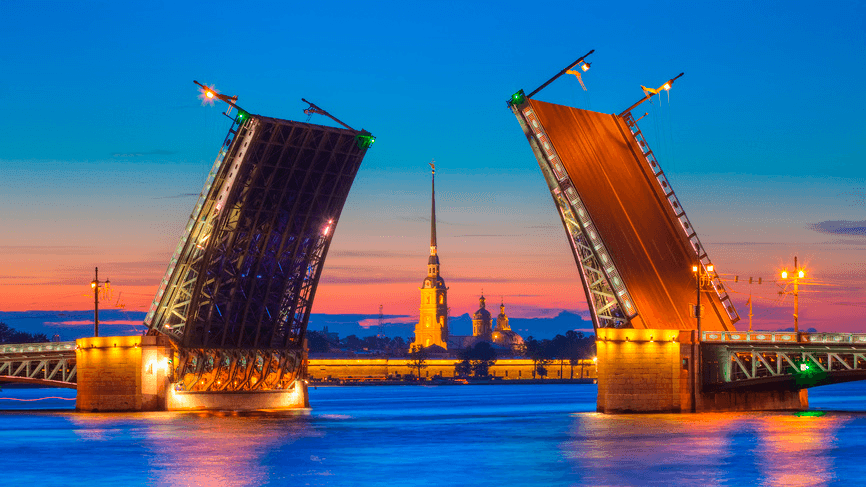
Photo courtesy of Igor Litvyak / Photobank Lori
The State Hermitage Museum
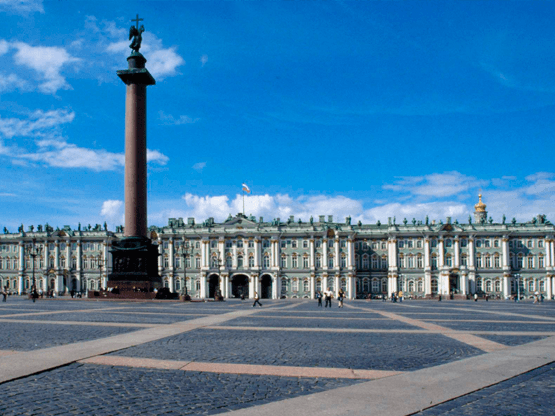
The State Hermitage Museum is the largest arts museum in Russia and one of the largest ones in the world. It was founded in 1764 when the Empress Catherine II purchased her first paintings, an art collection from a Berlin merchant Johann Ernst Gotzkowsky. In 1852, the public museum’s opening took place: the New Hermitage building was erected specifically for the sprawling collection.
Today, the State Hermitage is a huge museum with many branches both in Russia and abroad. Apart from the main complex of several buildings at the Dvortsovaya (Palace) Embankment, it includes Menshikov’s Palace, a wing of the General Staff Building, the Porcelain Factory Museum, and the Staraya Derevnya (Old Village) Restoration Centre. There are Hermitage Centres in Amsterdam, Kazan and Vyborg.
The total number of artworks in the museum’s collections amounts to over 3 million. Its halls are home to paintings of various epochs, the most ancient art and culture monuments of various peoples, art weapons, collections of porcelain and glass, ancient interior design items, and jewellery to name a few.
The Russian Museum
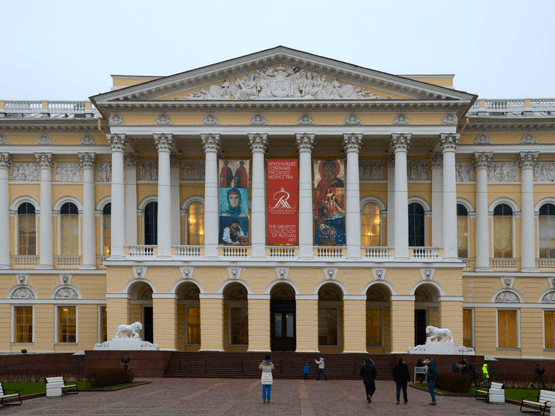
The largest museum of Russian art in the world was opened 120 years ago, in 1898. Its first exhibits came there from Imperial Palaces, the Hermitage and the Academy of Arts. Many art objects were donated by private collectors. The first collection of the Russian museum comprised around 1,800 art works.
Today, the museum grounds cover over 30 hectares. Its exhibits are stored in the buildings that are architectural monuments of the 18th and 19th centuries: the Mikhailovsky, Stroganovsky and Mramorny Palaces, the Mikhailovsky Castle and Peter I’s Summer Palace.
The museum’s collection includes around 400,000 exhibits, ranging from the 10th to the 21st century. There, you can see paintings by Karl Bryullov and Ivan Aivazovsky, Nikolai Ge and Isaac Levitan, Arkhip Kuindzhi and Nikolai Roerich, and also ancient icons, folk art objects from various centuries, furniture, textile, sculpture and books.
St. Isaac’s Cathedral
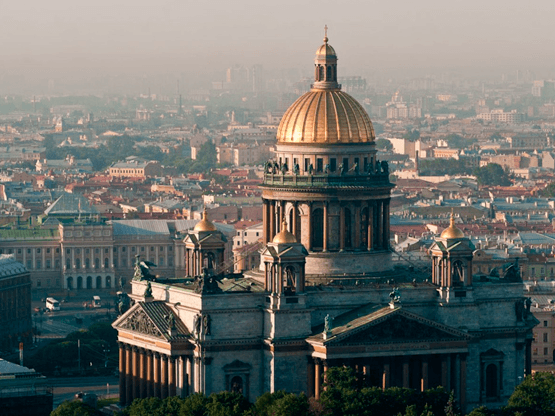
The largest orthodox cathedral in Saint Petersburg was laid down in 1818. Its construction lasted 40 years under the personal control of first, the Emperor Alexandre I, and later, Nicholas I. The project was designed by the young architect Auguste Montferrand. He developed a building designed in classical style. The cathedral’s height is 101.4 metres, and the dome’s diameter is almost 26 metres. Its gilding required over 100 kilograms of gold.
The cathedral’s sculptural decorations were created under the direction of Ivan Vitali. In equivalent to the Golden gate of the Florence Baptistery, he cast a bronze gate with images of saints. Vitali also created statues of 12 apostles and angels that were distributed in the corners of the building and above the pilasters (flattened columns).
The works on the cathedral’s interiors lasted 17 years and were finished only in 1858. Inside, the cathedral was fitted out with precious rocks: lazurite, malachite, porphyry and various types of marble. Famous painters Fyodor Bruni and Karl Bryullov decorated the cathedral with frescoes.
The Mramorny Palace
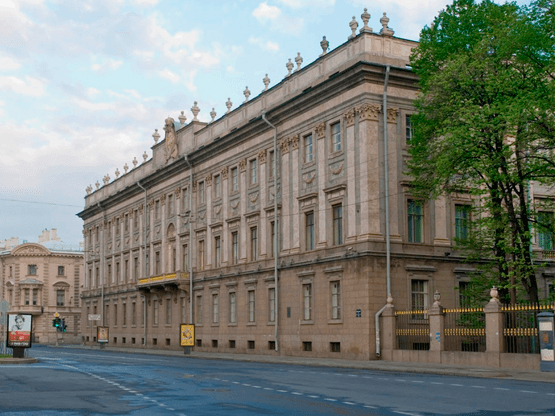
The building was constructed in 1785 by an Italian architect Antonio Rinaldi. Later, the palace was dubbed Mramorny (‘Marble’) since 32 types of marble were used to decorate the palace’s outer façades and interiors. The walls of one of the most beautiful halls were outfitted with Italian, Greek, Karelian and Ural marble and also lazurite. The Grand Staircase is made of silvery marble, as well as its decorations, sculptures by Fyodor Shubin.
Today, the Mramorny Palace houses a branch of the Russian Museum. Its rooms are home to the permanent exhibition, ‘Foreign painters in Russia in the 18th and the 1st half of the 19th century’.
The Aleksandrinsky Theatre
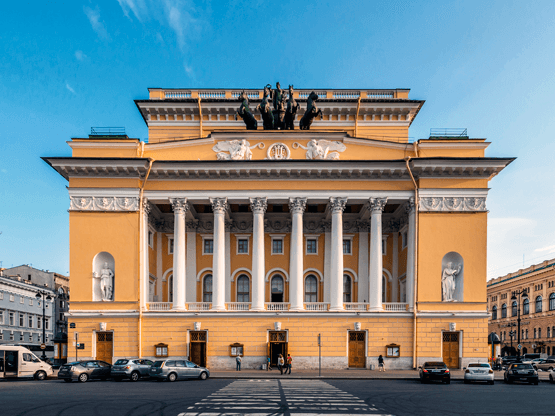
The Aleksandrinsky Theatre is the oldest national theatre in Russia. The imperial theatre was named after Alexandra Fyodorovna, Nicholas I’s spouse.
The theatre’s building was erected by the architect Karl Rossi in 1832 at the location of the wooden Maly Theatre. The architect developed not only the project of the theatre but also projects of the square the street surrounding the building. The Empire style building is decorated with artworks by Stepan Pimenov and Vasily Demut-Malinovsky: a friso with theatre masks, sculptural Apollo’s quadriga and statues of muses.
In 2006, the building of the theatre was reconstructed and the historical design of its interiors was recreated. The Aleksandrinsky Theatre is also home the theatre’s museum, which exhibits sets, stage costumes, furniture and props from various shows.
